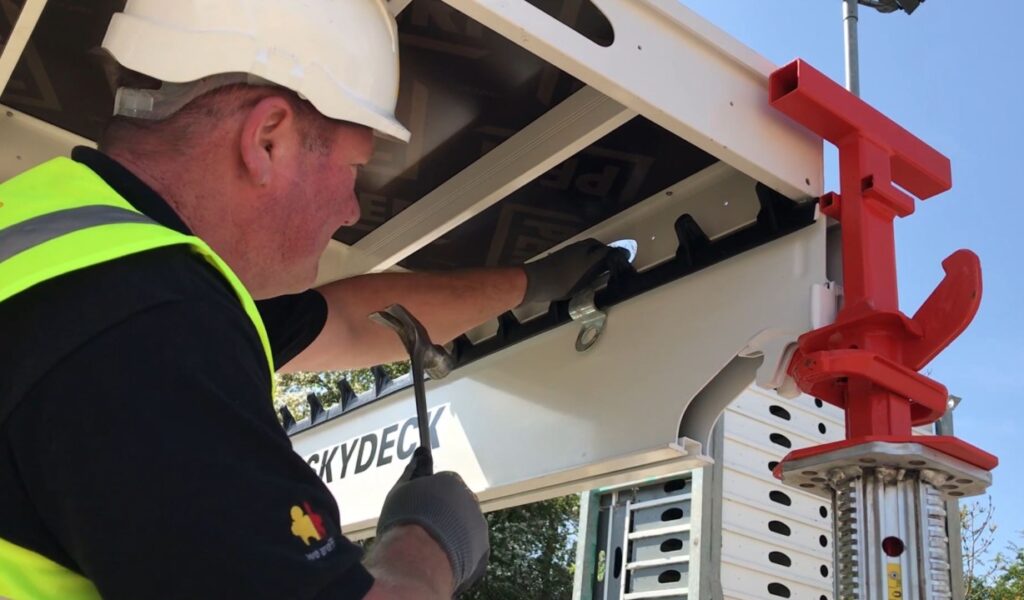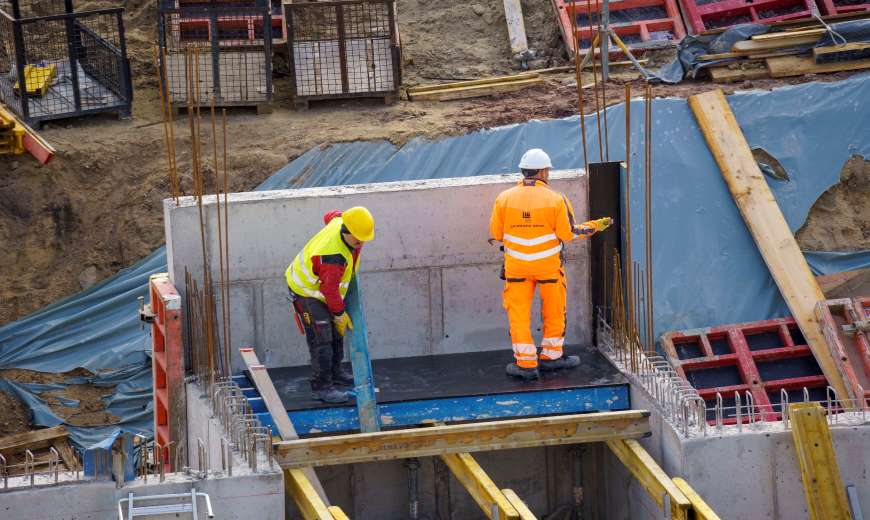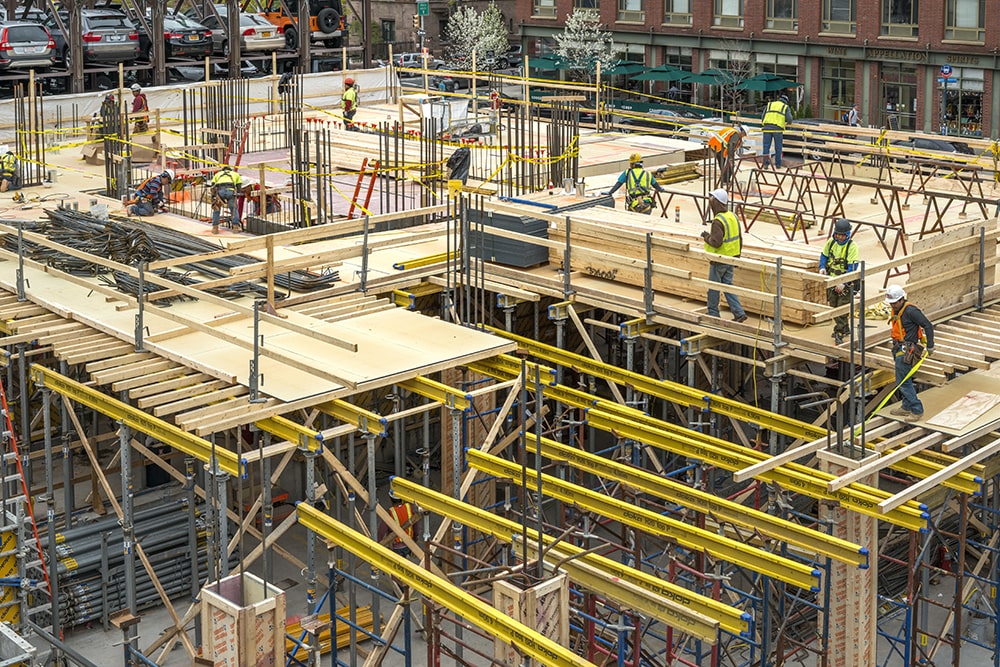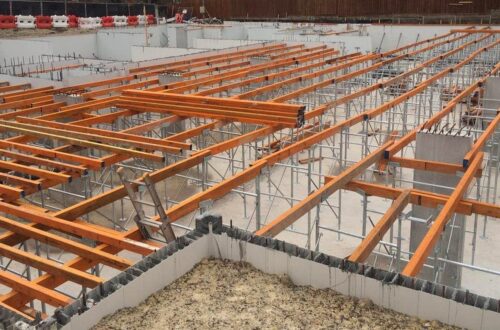Working with LVL (Laminated Veneer Lumber) formwork in construction requires a unique set of skills and expertise. LVL formwork is an innovative and versatile construction material that offers various benefits, making it a popular choice for builders and contractors. To effectively utilize LVL formwork, professionals need to undergo specialized training and skills development programs. This article explores the fundamentals of LVL formwork, the essential skills required for working with it, available training programs, safety measures, and career opportunities in this field.
Understanding LVL Formwork
LVL formwork or lvl timber formwork is a type of engineered wood product that consists of multiple thin layers of wood veneers glued together, creating a durable and strong material for constructing concrete structures. It is commonly used for forming concrete walls, slabs, beams, and columns. LVL formwork has superior strength, dimensional stability, and load-carrying capacity, making it highly suitable for heavy-duty construction projects.
Basics of LVL Formwork
Before delving into the various aspects of working with LVL formwork, it is essential to understand its basic characteristics and properties. LVL formwork provides a smooth and even surface finish to concrete structures and is known for its excellent resistance to warping, shrinking, and splitting. Its uniform strength and stiffness make it an ideal choice for creating formwork systems that can handle high pouring pressures and heavy loads.

Importance of LVL Formwork in Construction
The use of LVL formwork brings several advantages to construction projects. Firstly, it allows for faster and more efficient construction processes due to its lightweight nature, ease of handling, and prefabricated elements. LVL formwork also enables better control over the quality of concrete by providing accurate dimensions and reducing surface defects. Additionally, it offers excellent sustainability credentials, as it is made from renewable resources and can be reused multiple times, reducing waste and environmental impact. Learn more about renewable resources click here.
Furthermore, LVL formwork offers enhanced safety features during construction. Its high load-carrying capacity ensures the stability of the formwork system, reducing the risk of accidents or structural failures. The smooth surface finish provided by LVL formwork also minimizes the need for additional surface treatments, saving time and resources.
Moreover, LVL formwork is highly versatile and can be easily customized to meet specific project requirements. It can be cut, shaped, and joined together to create complex formwork configurations, allowing for the construction of unique architectural designs. This flexibility makes LVL formwork an excellent choice for projects that demand intricate and aesthetically pleasing concrete structures.
Essential Skills for Working with LVL Formwork
Professionals working with LVL formwork need to possess a combination of technical, problem-solving, and communication skills to ensure successful project execution. Developing these skills is crucial for ensuring safe and efficient use of LVL formwork in construction projects. Learn more about Future Innovations in LVL Formwork: What to Expect visit at https://northcarolinacondoliving.com/future-innovations-in-lvl-formwork-what-to-expect/
Technical Skills
Working with LVL formwork requires a strong understanding of construction principles, including structural design, load calculations, and formwork assembly techniques. Professionals must be able to interpret construction drawings and accurately select, fabricate, and install LVL formwork elements. Knowledge of relevant construction codes and standards is also critical to ensuring compliance and structural integrity. learn more about technical skills visit at http://vijayam.edu.in/technical-skills/.

Problem-Solving Skills
As with any construction project, unforeseen challenges and problems may arise when working with LVL formwork. Professionals need to possess excellent problem-solving skills to identify and address issues related to formwork stability, load distribution, and concrete pouring. The ability to think critically and find innovative solutions is essential for ensuring smooth progress and avoiding costly delays.
Communication Skills
Effective communication is vital in the construction industry, especially when working with a team that includes architects, engineers, contractors, and laborers. Professionals working with LVL formwork must be able to clearly and confidently communicate their ideas, instructions, and requirements to ensure a common understanding among team members. This includes verbal communication during meetings and on-site discussions, as well as written communication through reports, drawings, and specifications.
Furthermore, strong communication skills also extend to the ability to listen actively and empathetically. Professionals working with LVL formwork must be able to understand and address the concerns and questions of their team members. This not only fosters a collaborative and inclusive work environment but also helps to prevent misunderstandings and potential errors during the construction process.
In addition to verbal and written communication, professionals working with LVL formwork should also be adept at utilizing visual aids and technology to enhance their communication efforts. This may include creating detailed 3D models or using virtual reality simulations to help convey complex concepts and designs to the team. By utilizing these tools, professionals can ensure that everyone involved in the project has a clear and accurate understanding of the intended formwork system and its implementation.
Training Programs for LVL Formwork
To acquire the necessary skills and knowledge for working with LVL formwork, professionals can choose from various training programs. These programs provide comprehensive instruction and hands-on experience to ensure proficiency in handling LVL formwork.
When it comes to on-the-job training, it is often considered the most practical and effective way to learn about LVL formwork. Under the guidance of experienced professionals, trainees can acquire skills through direct, hands-on experience in real construction projects. This training method allows individuals to observe and participate in the actual processes of LVL formwork installation, adjustment, and removal.
However, for those looking for a more structured approach, vocational training programs offered by trade schools and technical institutes are an excellent option. These programs provide individuals with structured courses specifically designed for working with LVL formwork. Covering theoretical knowledge and practical skills, these programs include topics such as formwork system selection, assembly techniques, safety procedures, and formwork removal. To ensure competency, vocational training programs often incorporate simulated construction environments and practical assessments.
In today’s digital era, online training courses offer flexibility and convenience for professionals seeking to enhance their skills in LVL formwork. These courses provide comprehensive modules that cover all aspects of LVL formwork, including theoretical concepts, practical techniques, and safety guidelines. Online training platforms often include interactive quizzes, video demonstrations, and virtual simulations to enhance the learning experience. This allows professionals to learn at their own pace and access the training materials from anywhere in the world.
It is important to note that regardless of the training program chosen, continuous learning and practice are essential for mastering the art of working with LVL formwork. As construction techniques evolve and new technologies emerge, staying up-to-date with the latest industry trends is crucial for professionals in this field. Whether it’s through on-the-job training, vocational programs, or online courses, investing in training is a valuable step towards becoming a skilled and competent LVL formwork professional.
Safety Measures in Handling LVL Formwork
Working with LVL formwork involves potential risks and hazards that need to be mitigated through the implementation of proper safety measures. It is crucial for professionals to prioritize safety to protect themselves and their teammates. The following safety measures should be adhered to when handling LVL formwork in construction projects:
Personal Protective Equipment
Wearing appropriate personal protective equipment (PPE) is essential when working with LVL formwork. This includes safety helmets, protective eyewear, gloves, and safety boots. PPE provides protection against potential falling objects, sharp edges, splinters, and other physical hazards that may be encountered during formwork installation or removal.
Additionally, respiratory protection such as dust masks may be necessary when cutting or sanding LVL formwork to prevent inhalation of wood dust particles. Properly fitted PPE not only safeguards workers from immediate dangers but also promotes overall health and well-being on the construction site.
Safety Protocols
Adhering to established safety protocols and procedures is crucial to minimize the risk of accidents and injuries. This includes conducting thorough risk assessments, ensuring proper formwork design and stability, implementing fall protection systems, and regularly inspecting formwork components for integrity and suitability. Workers should also be trained in emergency procedures and evacuation plans to respond effectively to any unforeseen incidents.
Moreover, it is essential to establish clear communication channels among team members regarding safety protocols and potential hazards associated with LVL formwork. Regular safety meetings and toolbox talks can help reinforce safety awareness and encourage a proactive approach to identifying and addressing safety concerns on the construction site.
Career Opportunities in LVL Formwork
Professionals with expertise in working with LVL formwork are in high demand within the construction industry. The comprehensive understanding and practical skills gained through training and experience open up a range of career opportunities. Some potential job roles in LVL formwork include:
Job Roles and Responsibilities
– LVL Formwork Engineer: Responsible for designing and overseeing formwork systems using LVL materials. This includes formwork selection, structural analysis, and providing technical guidance to the project team.
– LVL Formwork Supervisor: Oversees the on-site installation, adjustment, and removal of LVL formwork. Ensures compliance with safety standards, quality control, and efficient formwork installation processes.
But what other career paths can professionals in LVL formwork explore? Let’s take a closer look.
– LVL Formwork Designer: Collaborates with architects and engineers to create innovative and efficient formwork designs using LVL materials. This role requires a strong understanding of structural principles, material properties, and construction techniques.
– LVL Formwork Estimator: Calculates the quantity of LVL materials required for a project, based on the design specifications and construction plans. This role involves analyzing project requirements, sourcing materials, and providing accurate cost estimates.
Career Growth and Advancement
Professionals working with LVL formwork can expect continuous career growth and advancement opportunities. As they gain experience and expertise, they can progress to higher-level positions such as project managers, construction managers, or formwork consultants. Additionally, they may have the opportunity to work on complex and prestigious construction projects that require specialized formwork applications.
Moreover, professionals in LVL formwork can also explore entrepreneurial opportunities. They can establish their own formwork contracting businesses, providing specialized services to construction companies. This allows them to have greater control over their projects, work with a diverse range of clients, and potentially expand their business into other areas of construction.
In conclusion, training and skills development for working with LVL formwork are essential for ensuring safe and efficient construction practices. Understanding the basics of LVL formwork, possessing technical, problem-solving, and communication skills, and undergoing relevant training programs are vital for professionals in this field. By following proper safety measures and taking advantage of career opportunities, individuals can establish successful careers in working with LVL formwork, contributing to the growth and development of the construction industry.






